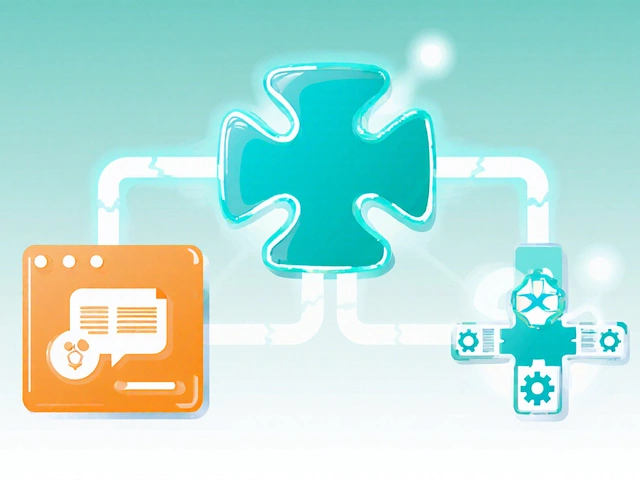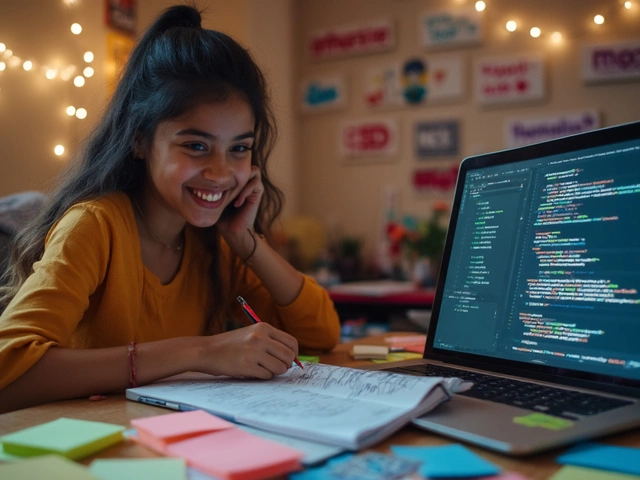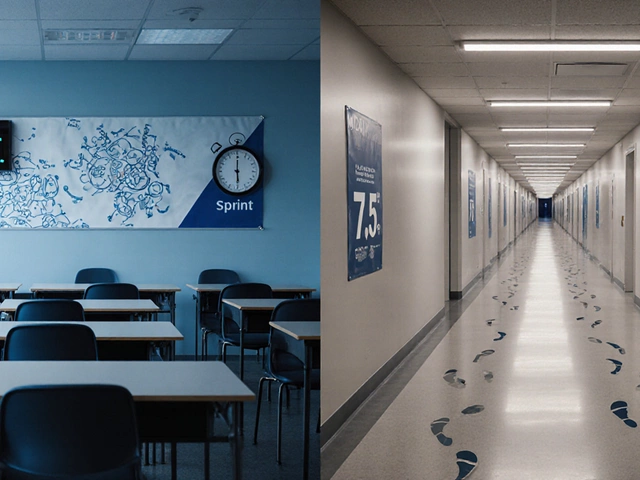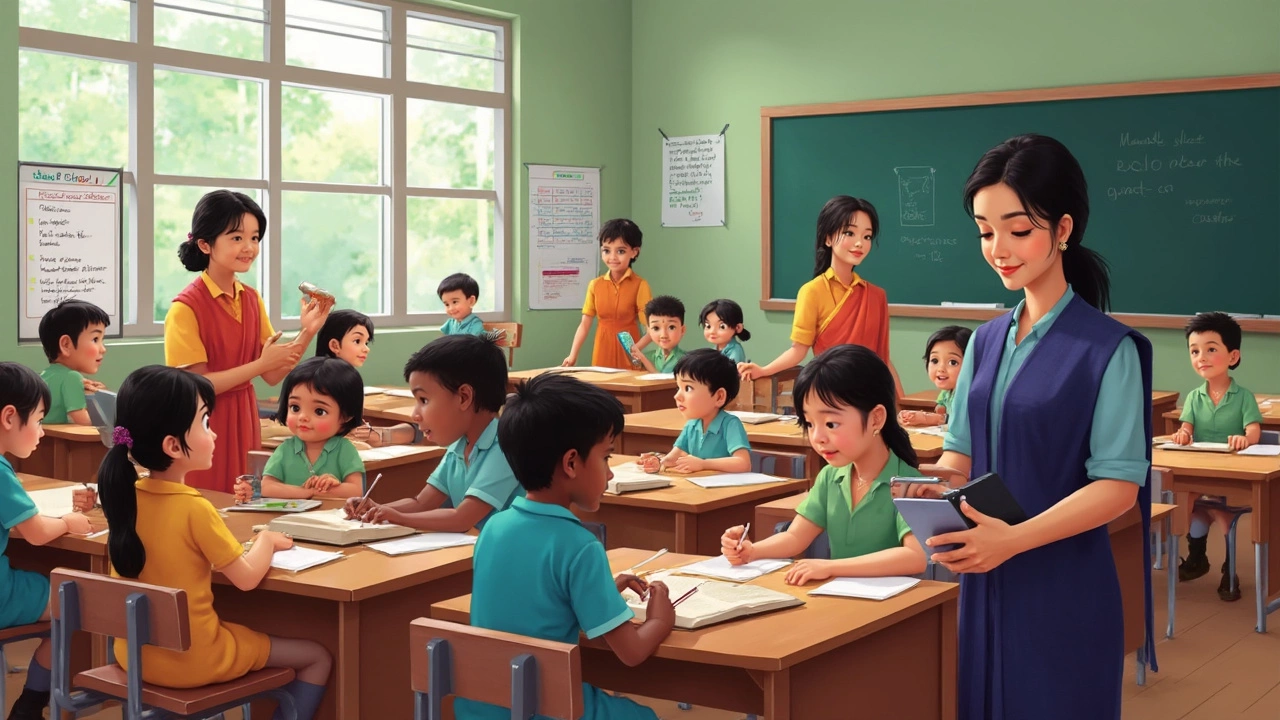
If you're dealing with school in India, sooner or later you'll come across the CBSE syllabus—it's practically a household term. The Central Board of Secondary Education, or CBSE, sets a fixed roadmap of what students need to learn in each class, right from the basics in Class 1 to the specialized subjects in Classes 11 and 12. Teachers follow this guide so every school that follows CBSE is on the same page. This means a Grade 8 science student in Chennai learns the same stuff as one in Delhi or Goa.
Lots of families use the CBSE syllabus for planning, so nobody gets caught off guard when exam season rolls around. You can easily check the latest syllabus online—CBSE puts new PDFs out before each school year, so nothing gets left to chance if topics change or marks split differently. Missing out on those yearly updates can really throw off your prep, so checking the official site saves a bunch of headaches later on.
- CBSE Syllabus Basics
- Core Subjects and Streams
- CBSE vs. Other Boards
- Smart Tips for Using the Syllabus
CBSE Syllabus Basics
The CBSE syllabus is a big deal for any Indian student, whether you’re in primary school or nearing those board exams. It’s not just a list of what to study—the syllabus is the backbone for teaching, planning lessons, and exams. The Central Board of Secondary Education, which runs under the Ministry of Education, releases an updated syllabus every year. In March 2024, for example, CBSE announced some new changes, and as usual, they made the PDFs available for anyone to download—no paywalls or secret links.
One thing that sets CBSE apart is how standardized it all is. Imagine the confusion if one school skipped algebra in Class 9 while another spent all year on it. With the CBSE syllabus, the structure is clear:
- It tells you the chapters and concepts for every subject and grade.
- It outlines how many marks each section carries in the final exams.
- It breaks down how many periods (classes) are meant for each topic.
- Even project work, assignments, and internal assessments are spelled out.
Here’s something that usually surprises parents: the board tweaks the syllabus almost every year. Sometimes it’s just a few topics dropped or added. In tough years, like during the COVID-19 pandemic, CBSE cut the syllabus by nearly 30% for some classes. That move helped millions avoid extra pressure, and the board said, "The decision was taken after recommendations from experts to reduce the academic burden" in an official press note (
"This reduction in syllabus has been made keeping in mind the loss of instructional time due to the pandemic," — CBSE, July 2020 release.).
Textbooks, practice papers, and even competitive exam questions (like JEE and NEET) often use the syllabus as a base. That’s why teachers, coaching centers, and students all keep an eye on any syllabus updates, especially for secondary (Class 10) and senior secondary (Class 12) years—those are the grades where the CBSE board exams set the pace for college admissions.
Core Subjects and Streams
The heart of the CBSE syllabus is what kids actually study every day in school. Up to Class 10, all students pretty much take the same core subjects. Here's what you'll find on nearly every timetable:
- Mathematics
- Science (which combines Physics, Chemistry, and Biology)
- Social Science (History, Geography, Political Science, and Economics)
- Languages (usually English and Hindi, but other regional languages are possible in some schools)
- Computer Application or IT (in many schools)
Only after Class 10 do things get specialized. When students hit Class 11, they pick a stream. There are three main options:
- Science: Includes Physics, Chemistry, Biology, Mathematics, and sometimes Computer Science. This is the go-to for students aiming for engineering or medical fields. Some choose both Math and Biology, but that's not for the faint-hearted!
- Commerce: Has Business Studies, Accountancy, Economics, and sometimes Entrepreneurship or Maths. This track is for future business majors, accountants, or anyone dreaming of a CA or MBA path.
- Humanities (Arts): Offers History, Geography, Political Science, Psychology, Sociology, and more. This stream works for students interested in law, civil services, or social sciences.
Even within a stream, students usually get to pick optional subjects. For example, someone in Science can sometimes add Informatics Practices or even Fine Arts. Flexibility is growing every year—CBSE now lets students mix subjects if the school offers it, like combining Economics and Computer Science.
Wondering what this all looks like in the textbooks? Here’s a quick summary of the main subjects (by stream) for Classes 11 and 12:
| Stream | Main Subjects | Popular Optional Subjects |
|---|---|---|
| Science | Physics, Chemistry, Mathematics/Biology | Computer Science, Physical Education, Economics |
| Commerce | Accountancy, Business Studies, Economics | Mathematics, Informatics Practices, Entrepreneurship |
| Humanities | History, Political Science, Geography | Psychology, Sociology, Home Science, Fine Arts |
This system helps kids zero in on what matches their strengths and interests. It also sets up a smoother ride for college entrance tests—most competitive exams in India are actually modeled on the CBSE syllabus, especially for Science and Commerce.
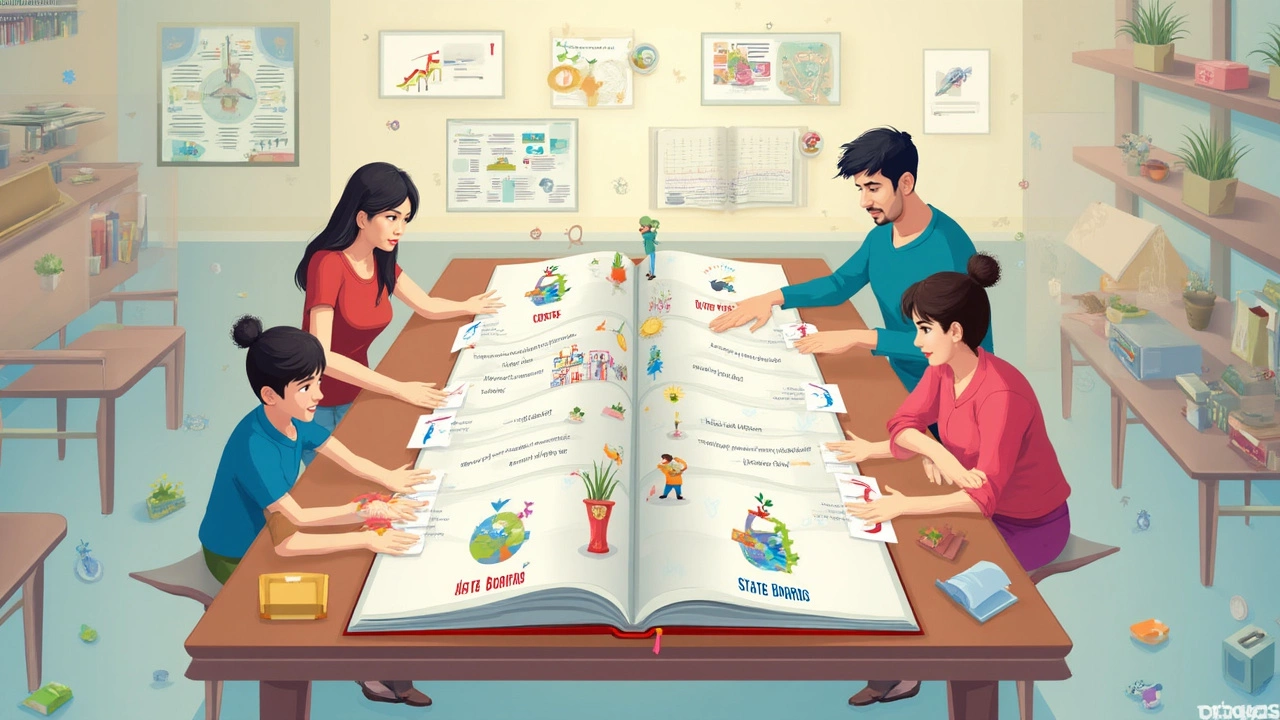
CBSE vs. Other Boards
Choosing a school board in India can feel like picking a whole path for your future. The most popular choices are CBSE, ICSE (run by CISCE), and various state boards. Each one has its own vibe and way of doing things. Here’s how CBSE syllabus stands out compared to the others.
CBSE is known for its straightforward, structured approach. The syllabus is more focused on science and maths, which is why students aiming for engineering or medical entrance exams often prefer it. Most big national exams, like NEET and JEE, actually base their questions on the CBSE curriculum. That means sticking with CBSE can give you an edge if those tests are in your plans.
ICSE, on the other hand, is famous for detailed English and a broad subject range. There’s a lot more focus on coursework, and students say it feels a bit heavier, but it can be great for those aiming for careers in literature, arts, or global education later. State boards usually change from state to state, so the syllabus looks different depending on where you live. They often use the local language more and may pace their content in line with the state’s own higher education entry system.
If you like numbers, check out how the boards stack up in India:
| Board | Schools Affiliated (2024) | Main Languages Used | Main Focus |
|---|---|---|---|
| CBSE | Over 27,000 | English, Hindi | Science, Maths |
| ICSE (CISCE) | ~2,400 | English | Literature, Science, Arts |
| State Boards | Varies (Lakhs) | Regional + English/Hindi | Diverse—state’s own pattern |
One big difference: CBSE’s exams, grading, and textbooks are standardized across India, so if your family moves, transferring schools is a breeze. ICSE and state boards tend to be less flexible, especially if you’re moving between states or to a satellite town.
Sometimes parents get stuck worrying about which board is “harder.” Truth is, it's more about what works for your goals. If you want to crack competitive exams or need to move cities for work, CBSE is usually the safer pick.
Smart Tips for Using the Syllabus
The CBSE syllabus is more than a document you see once a year—it’s your main tool for smarter studying. Most students and parents just skim it, but if you dive in properly, you’ll know exactly what’s expected and never waste time on stuff that won’t show up in exams.
- Print out or download the latest syllabus PDF: Don't just rely on what your school gives you. Grab the official file for your class and subjects from the CBSE website. That way, you always have the updated list of topics.
- Check the marks weightage: Each chapter or unit gets a certain amount of marks. CBSE always publishes this, so focus more study time on chapters with higher weightage. This matters a lot around board exam time.
- Match your textbooks chapter by chapter: Sometimes textbooks include more than you actually need. Compare the syllabus bullet points with the book’s chapters so you don’t end up over-studying.
- Update notes when the syllabus changes: CBSE tweaks the content now and then, like cutting some chapters or bringing in new topics. Always check for these updates every April before classes start—or risk learning unnecessary stuff.
- Plan revision around sample papers: Most of the CBSE sample papers for board exams are 100% based on the syllabus structure. If you focus practice just on the listed topics, your revision becomes way more effective.
Here’s a quick look at what parents and students say helps the most when using the CBSE syllabus during a school year:
| Activity | Percent of Students Finding it Useful |
|---|---|
| Using syllabus to guide daily study schedule | 78% |
| Checking changes in syllabus each year | 63% |
| Practicing with syllabus-based question banks | 82% |
| Skipping non-syllabus textbook chapters | 54% |
If you stay tuned for new syllabus updates, make use of sample papers, and coordinate with teachers before diving deep into any topic, you’ll save loads of time and avoid surprises in exams. So, next time someone says the syllabus is just paperwork, you’ll know better.


